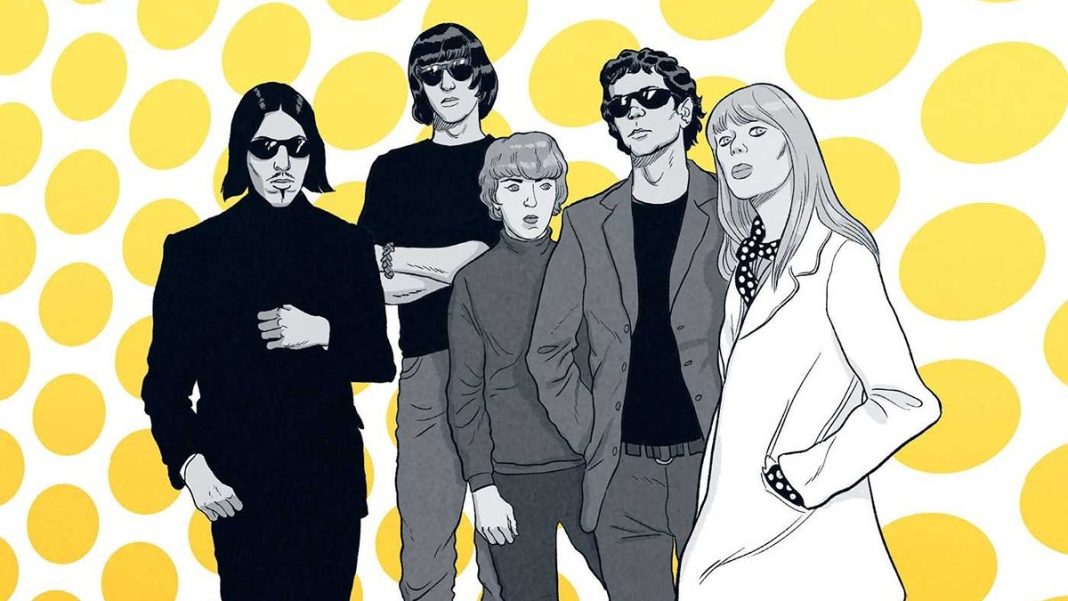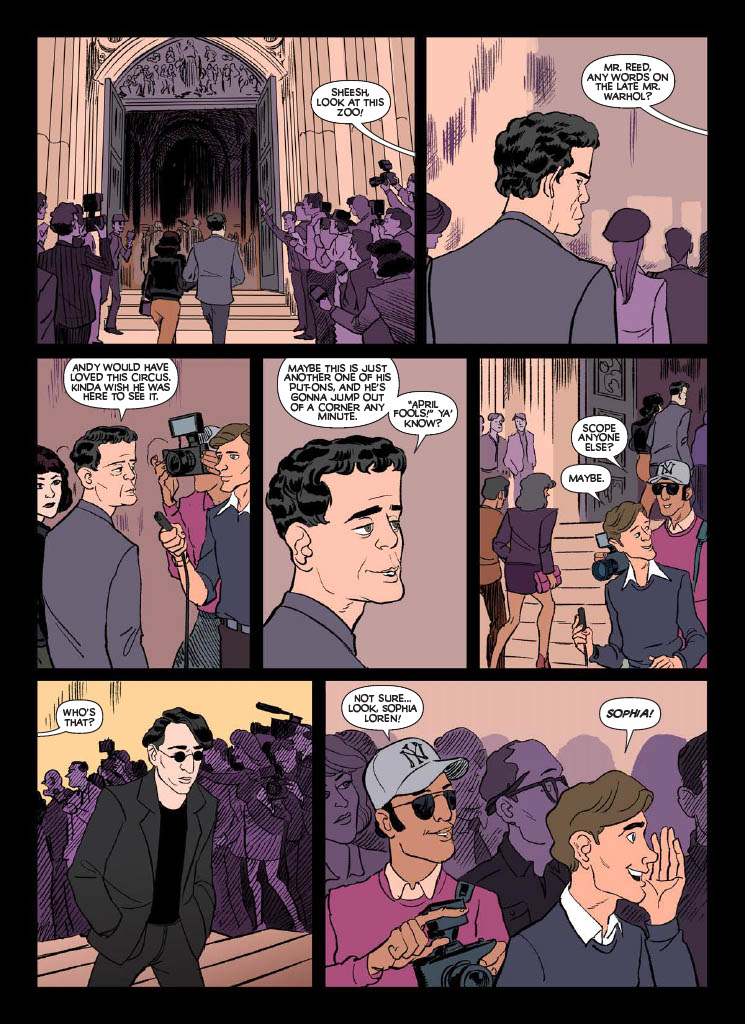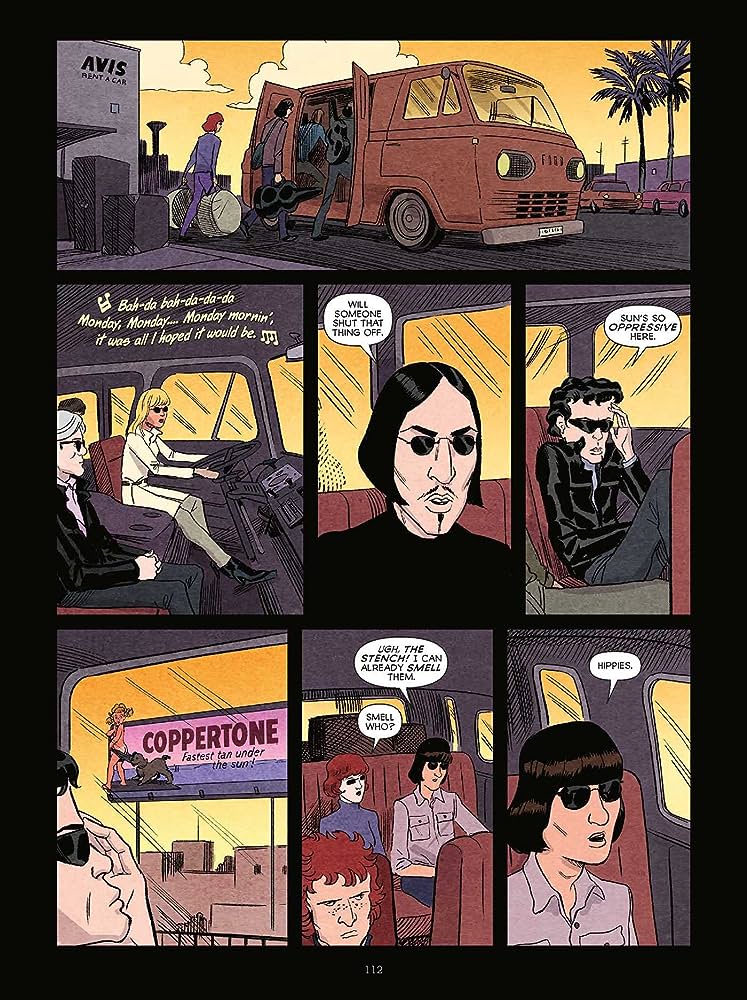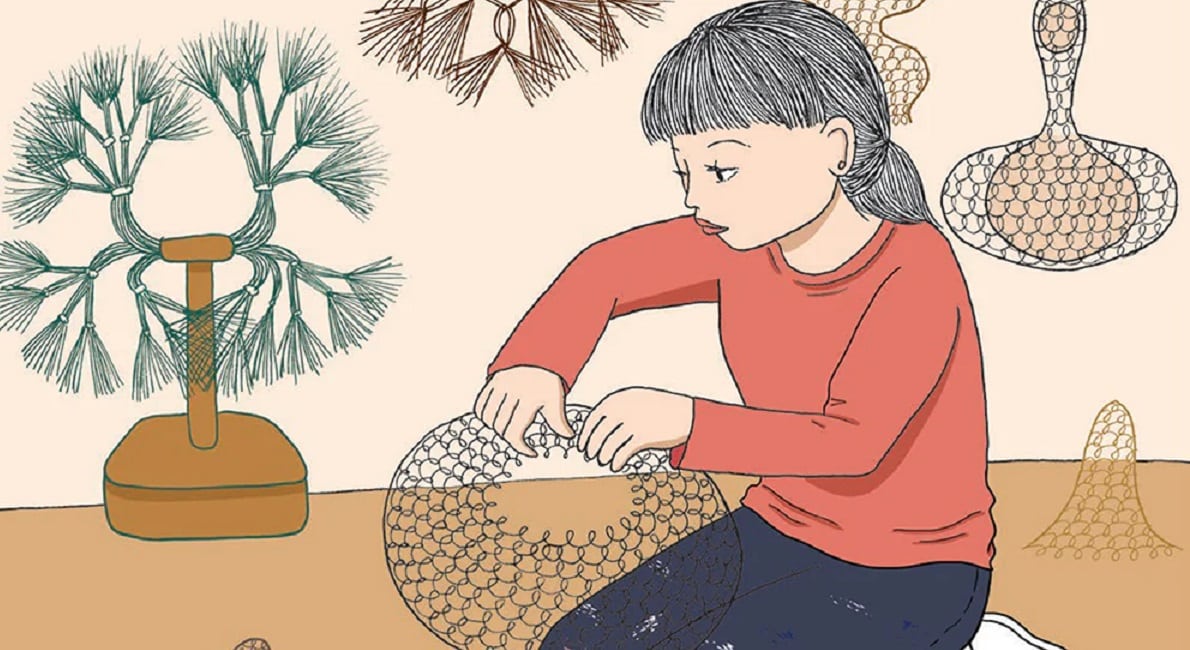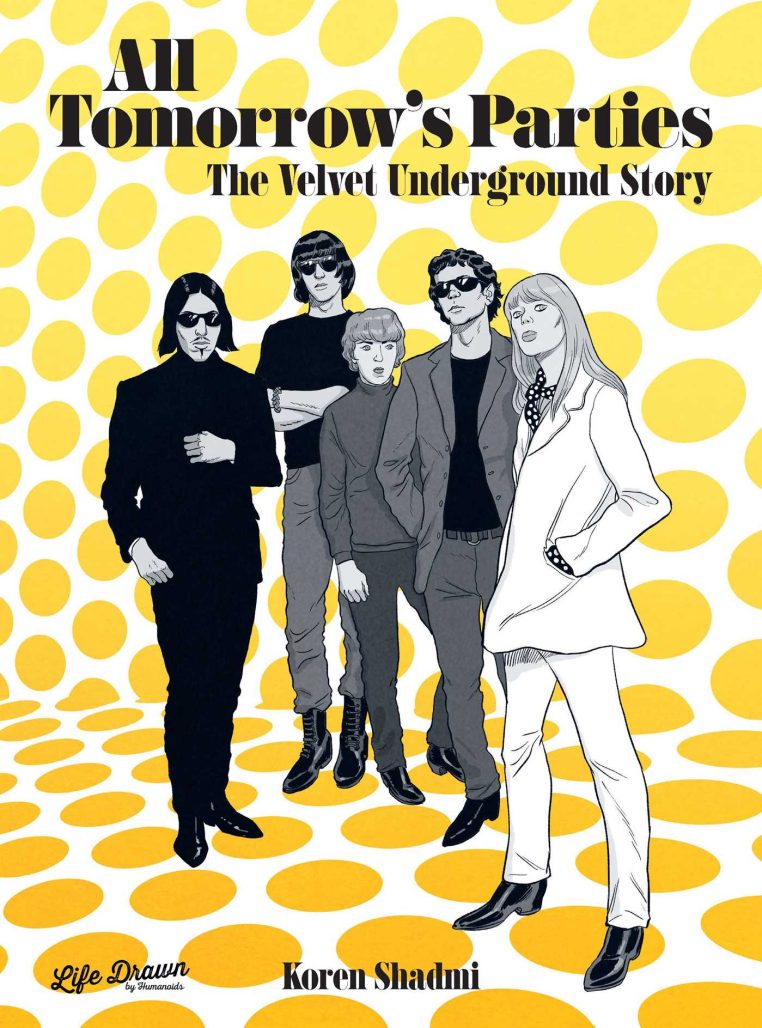
Written and illustrated by Koren Shadmi
Lettered by AndWorld Design
Edited by Jake Thomas
Published by Humanoids
The thing that makes a band essential—legendary, even—is its inescapability. Anyone looking at the story and influence behind a particular kind of music will find that stumbling into certain bands is inevitable once they cross paths. If you’re on a folk music journey, coming across Bob Dylan is a guarantee, but if you dive deeper into how his sound came to be you’ll find Woody Guthrie and Robert Johnson are required stops. Metal, for instance, brings about mention of the unholy trinity of Black Sabbath, Led Zepplin, and Deep Purple (though the Texas band Bloodrock and Mountain are often referred to as early influences as well). They will make themselves known. They’re too important.
For Alternative Rock and Punk, that inescapable band is The Velvet Underground. Comics artist Koren Shadmi (Twilight Man, Lugosi: The Rise and Fall of Hollywood’s Dracula) chronicles the story of this group of inescapable musicians, composed of Lou Reed, John Cale, Moe Tucker, Sterling Morrison, and Nico (from 1966-67). It’s a tale that can most accurately be described as a clash between creative prowess and angst-filled alienation.
Shadmi’s take on the Velvet Underground story centers on the two musicians that best represent that clash within the band: Lou Reed and John Cale. The story can mostly be divided into those two perspectives, with Nico later getting a bigger role once she’s put in the band by Andy Warhol, the artist that pushed them into the limelight by presenting them as an avant-garde group of musicians that were pushing the boundaries of music.
Much care is given to Reed and Cale’s life situations before they met, especially the conditions under which their personalities were forged. Reed came from a rather strict family that didn’t understand him, leading them to take extreme measures to “fix him.” Trauma and deeply rooted familial anxieties plague him from early on.
Cale shares much with Reed in terms of family woes and lifelong traumas, but his unravel differently. Suicidal ideation coupled with a dark incident involving sexual abuse went into the process that would later form his attitudes towards music.
Shadmi goes on to create a narrative that doesn’t put these musicians on trial. He doesn’t ask readers to judge them. Instead, he asks readers to consider complexity, especially as it’s revealed how contentious their relationship will become as they grow as a band.
It all informs the philosophy behind their musical stylings and philosophy, which was intentionally designed to be alienating. It wasn’t mainstream, hit-prone, or radio-ready music. It was an affront to it. This comes through in Reed and Cale’s many battles, both figuratively and literally.
To achieve this, Shadmi goes lengths to show how difficult and hurtful these people could be to each other, including how they treated girlfriends, ex-girlfriends, band members, and most notably Nico. Special care is taken to the portrayal of Reed’s interactions with Nico and how abusive he was to her given his stance on her necessity within the band. This complicates the relationship between the Reed and Warhol in very nuanced ways and Shadmi manages to capture it all with the stinging sensations I’m sure everyone felt whenever things were tense.
The book leans on a dark purple, grey, and yellowy color palette that controls the volume of the story’s many emotional arcs. It accentuates the visuals, which tread a fascinating line between realism and cartoonish. Likenesses are apparent but just slightly exaggerated in parts to really squeeze every ounce of personality possible from everyone present in any given panel.
The backgrounds get the same treatment, with venues, rundown apartments, and Warhol’s Factory all feeling distinct. Environments feel like characters in their own right, and they carry more narrative weight than they usually do in other books. It makes the story feel richer. It turns each page into a kind of animated exhibit of the personal aspects that built up the legend of The Velvet Underground.
All Tomorrow’s Party is the story of an unstoppable force meeting an immovable object. Lou Reed and John Cale certainly become the pillars of the story, and it’s hard to argue against that. But Shadmi finds a way to make sure every other person that was a part of the story has their say in it. It’s an impressive feat that shows just how much work and research went into getting the story right. It’s an inescapable book for those that want to know The Velvet Underground. It will find its way to you, one way or another.
Verdict: BUY, and then listen to White Light/White Heat in one sitting.
Check The Beat’s review section for a new graphic novel review every Friday in 2023!


